DNAJA1 Stabilizes EF1A1 to Promote Cell Proliferation and Metastasis of Liver Cancer Mediated by miR-205-5p
- PMID: 35586205
- PMCID: PMC9110222
- DOI: 10.1155/2022/2292481
DNAJA1 Stabilizes EF1A1 to Promote Cell Proliferation and Metastasis of Liver Cancer Mediated by miR-205-5p
Abstract
Liver cancer is one of the most common and aggressive malignancies worldwide with poor prognosis. Studies on pathogenesis of liver cancer are urgently demanded to develop better treatment strategy. Here, we found that overexpression of DnaJ heat shock protein family (Hsp40) member A1 (DNAJA1) increased cell proliferation, invasion, and angiogenesis in Huh 7 and HepG2 cells, while depletion of DNAJA1 in MHCC-97H and HCC-M3 showed opposite effects. In vivo functional assays indicated that DNAJA1 promoted tumor growth and pulmonary metastasis in mice. Mechanistically, as a direct target of miR-205-5p, DNAJA1 promoted proliferation and metastasis of liver cancer cells by stabilizing eukaryotic elongation factor 1A1 (EF1A1). Moreover, DNAJA was markedly upregulated in liver cancer tissues (P < 0.05) and was significantly associated with poor prognosis. And its expression was correlated with differentiation (P < 0.001), dissemination (P < 0.001), and serum AFP (P = 0.029). The mRNA levels of miR-205-5p and DNAJA1 were negatively correlated in liver cancer. In conclusion, our study reveals that DNAJA1 acts as an oncogene in liver cancer via miR-205-5p/EF1A1 axis and might be a potential biomarker to predict the prognosis for liver cancer patients.
Copyright © 2022 Lizhi Yi et al.
Conflict of interest statement
No conflicts of interest, financial or otherwise, are declared by the authors.
Figures
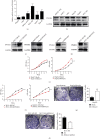
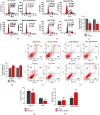


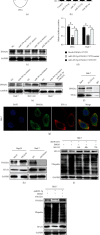
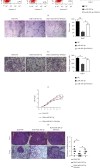
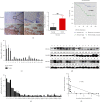
Similar articles
-
KNK437 restricts the growth and metastasis of colorectal cancer via targeting DNAJA1/CDC45 axis.Oncogene. 2020 Jan;39(2):249-261. doi: 10.1038/s41388-019-0978-0. Epub 2019 Sep 2. Oncogene. 2020. PMID: 31477839
-
Long non-coding RNA CCDC183-AS1 acts AS a miR-589-5p sponge to promote the progression of hepatocellular carcinoma through regulating SKP1 expression.J Exp Clin Cancer Res. 2021 Feb 4;40(1):57. doi: 10.1186/s13046-021-01861-6. J Exp Clin Cancer Res. 2021. PMID: 33541391 Free PMC article.
-
The lncRNA ZEB2-AS1 is upregulated in gastric cancer and affects cell proliferation and invasion via miR-143-5p/HIF-1α axis.Onco Targets Ther. 2019 Jan 18;12:657-667. doi: 10.2147/OTT.S175521. eCollection 2019. Onco Targets Ther. 2019. PMID: 30705594 Free PMC article.
-
MicroRNA-424-5p acts as a potential biomarker and inhibits proliferation and invasion in hepatocellular carcinoma by targeting TRIM29.Life Sci. 2019 May 1;224:1-11. doi: 10.1016/j.lfs.2019.03.028. Epub 2019 Mar 12. Life Sci. 2019. PMID: 30876939
-
MicroRNA-30a-5p suppresses proliferation, invasion and tumor growth of hepatocellular cancer cells via targeting FOXA1.Oncol Lett. 2017 Oct;14(4):5018-5026. doi: 10.3892/ol.2017.6745. Epub 2017 Aug 10. Oncol Lett. 2017. Retraction in: Oncol Lett. 2021 Aug;22(2):574. doi: 10.3892/ol.2021.12835. PMID: 29085515 Free PMC article. Retracted.
Cited by
-
Epigenetic Induction of Smooth Muscle Cell Phenotypic Alterations in Aortic Aneurysms and Dissections.Circulation. 2023 Sep 19;148(12):959-977. doi: 10.1161/CIRCULATIONAHA.123.063332. Epub 2023 Aug 9. Circulation. 2023. PMID: 37555319 Free PMC article.
-
Transcriptomic Profile Analysis of Brain Tissue in the Absence of Functional TRPM8 Calcium Channel.Biomedicines. 2024 Dec 31;13(1):75. doi: 10.3390/biomedicines13010075. Biomedicines. 2024. PMID: 39857659 Free PMC article.
-
DNAJC8: a prognostic marker and potential therapeutic target for hepatocellular carcinoma.Front Immunol. 2024 Jan 11;14:1289548. doi: 10.3389/fimmu.2023.1289548. eCollection 2023. Front Immunol. 2024. PMID: 38274804 Free PMC article.
-
From Inflammation to Oncogenesis: Tracing Serum DCLK1 and miRNA Signatures in Chronic Liver Diseases.Int J Mol Sci. 2024 Jun 12;25(12):6481. doi: 10.3390/ijms25126481. Int J Mol Sci. 2024. PMID: 38928187 Free PMC article.
-
Screening of serum markers in patients with resistant hypertension.Heliyon. 2024 Aug 14;10(17):e36333. doi: 10.1016/j.heliyon.2024.e36333. eCollection 2024 Sep 15. Heliyon. 2024. PMID: 39286109 Free PMC article.
References
-
- Bosch F. X., Ribes J., Díaz M., Cléries R. Gastroenterology (New York, N.Y. 1943) Vol. 127. United States: Elsevier BV; 2004. Primary liver cancer: eorldwide incidence and trends; pp. S5–S16. - PubMed
LinkOut - more resources
Full Text Sources

